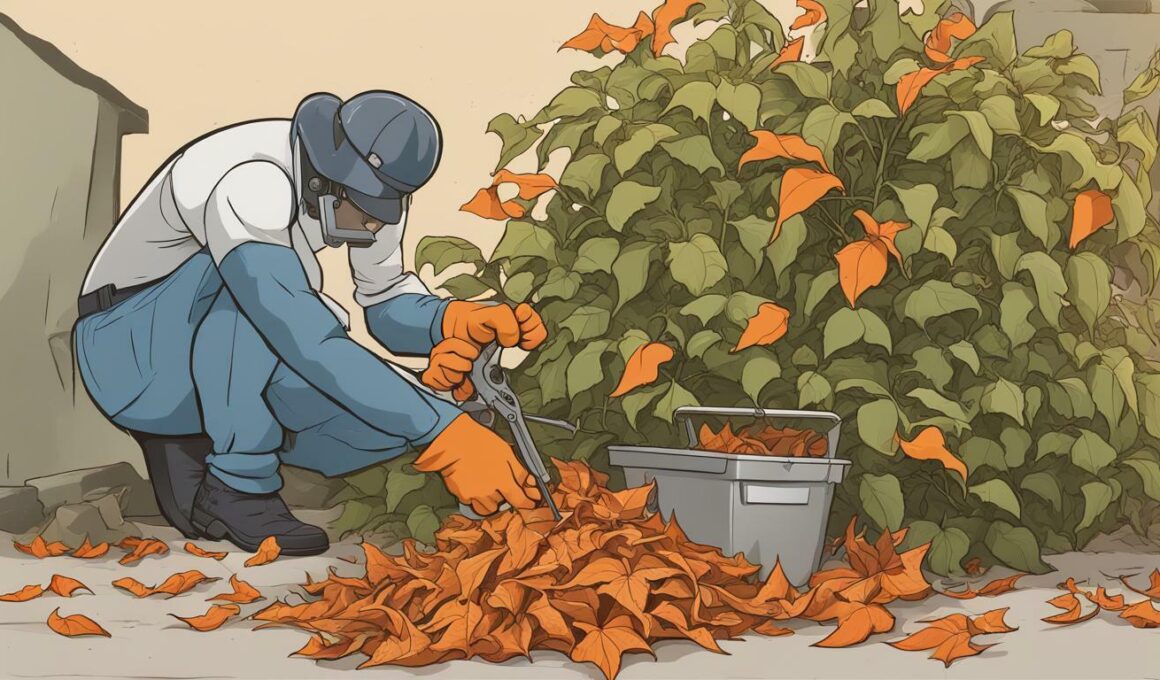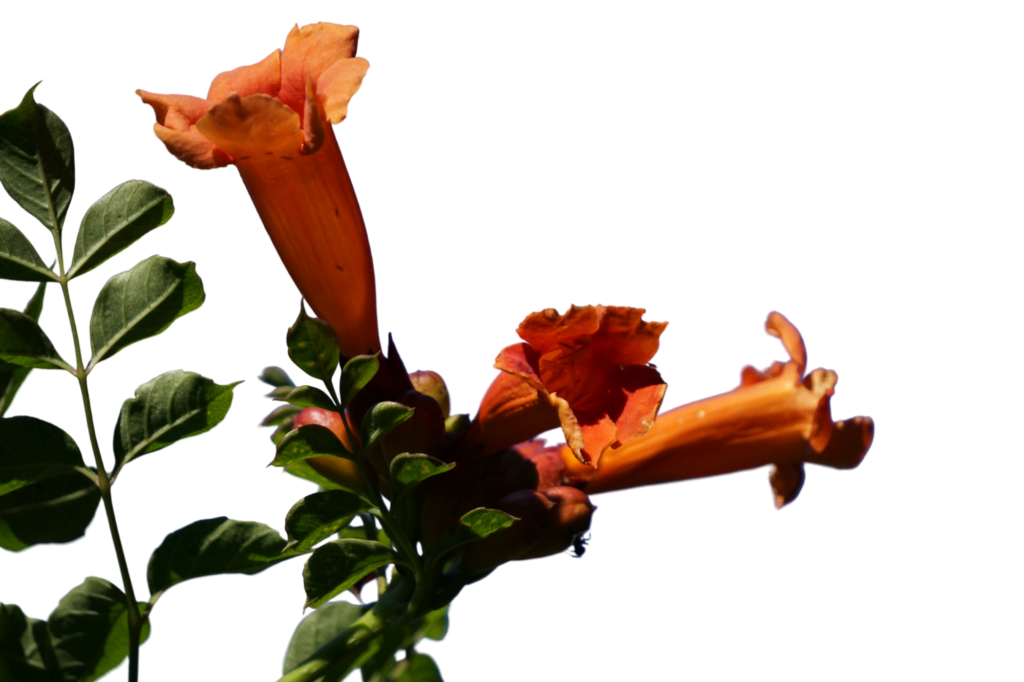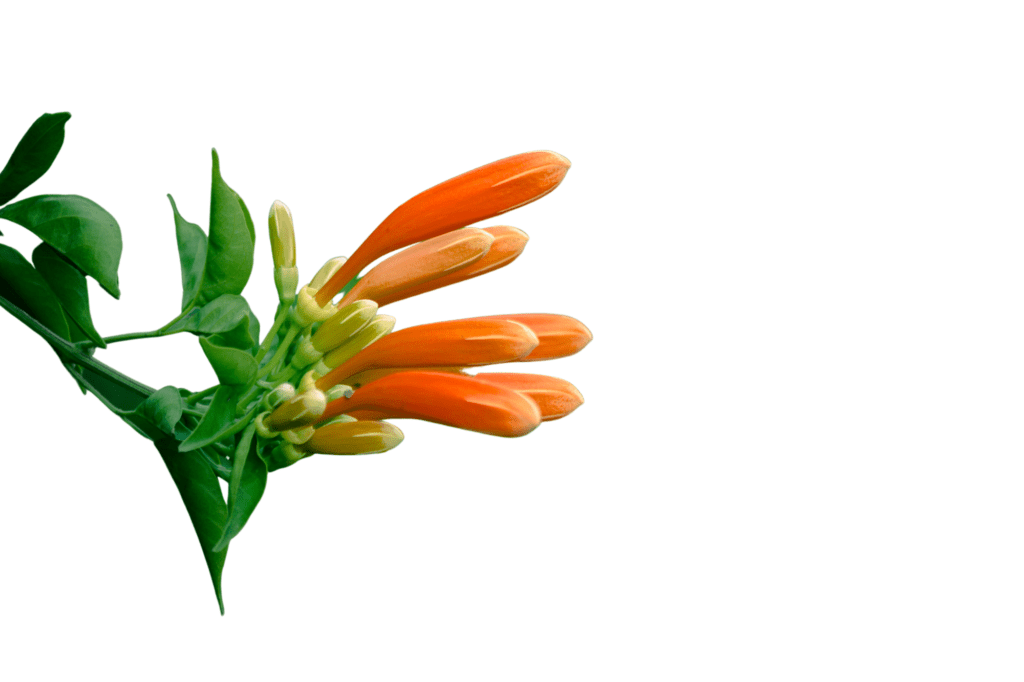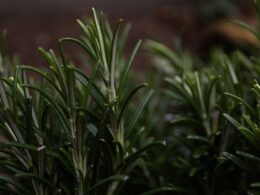As a trumpet vine owner, you may be wondering if it’s safe to burn the foliage when pruning or trimming. While it may seem like a quick and easy solution for disposal, it’s important to understand the potential hazards that can come with burning trumpet vine leaves.
In this section, we will explore whether trumpet vine foliage can be burned and provide safe disposal tips to ensure responsible handling of the foliage. Before we dive into that, let’s first take a look at proper care and maintenance for your trumpet vine to keep it healthy and thriving.
Post Summary:
- It is important to understand the potential hazards that come with burning trumpet vine foliage
- We will provide safe disposal tips to ensure responsible handling of the foliage
- Proper care and maintenance of your trumpet vine is crucial for its health and longevity
Trumpet Vine Care and Maintenance
If you want to keep your trumpet vine healthy and thriving, it’s important to know how to care for it properly. With the right care and maintenance, your plant will produce vibrant foliage and beautiful flowers that will make your garden the envy of your neighborhood. Here are some tips to keep in mind:
Planting
Trumpet vines are hardy plants that can adapt to different soil types, but they prefer well-drained soil. When planting your vine, choose a location with full sun exposure and adequate space for the plant to grow. Space multiple plants at least 10 feet apart to ensure enough growing room.
Watering
Trumpet vines have a deep root system that can find water even during periods of drought. However, it’s important to water your plant regularly during the first few years of growth to help the roots establish themselves. After that, you can reduce watering frequency, but make sure to water deeply when you do to encourage root growth.
Fertilizing
Trumpet vines benefit from regular fertilization to promote growth and flowering. Apply a balanced fertilizer in the early spring and again in mid-summer. Avoid using high-nitrogen fertilizers, as this can cause the plant to produce foliage at the expense of flowers.
Pruning
Pruning is an essential part of trumpet vine care. Without proper pruning, the plant can become overgrown and tangled, making it difficult to manage. To promote healthy growth and flowering, prune your trumpet vine in late winter or early spring. Remove dead or damaged branches, as well as any branches that are growing in the wrong direction. Keep the plant under control by trimming back new growth.
By following these tips, you can ensure that your trumpet vine is healthy and produces beautiful foliage and flowers for years to come.
Pruning Tips for Trumpet Vine
Pruning is a crucial step in maintaining healthy and beautiful trumpet vine foliage. To start, prune your trumpet vine during its dormant period, which is typically in late fall or winter. This helps the plant prepare for new growth in the spring.
When pruning, focus on removing any dead, damaged, or diseased wood. This will help prevent the spread of disease and improve the overall health of the plant. Additionally, prune back any old wood to encourage new growth.
It’s important to note that pruning can impact the risk of burning trumpet vine foliage. When pruning, avoid cutting into the woody stems of the plant, as this can create a wound that is susceptible to disease and pests. Instead, focus on removing small, unhealthy portions of the plant.
Remember to use sharp, clean pruning shears and to always make clean cuts at a 45-degree angle. This will promote healing and prevent damage to the plant.
Potential Damage to Trumpet Vine Leaves
Trumpet vine leaves are a beautiful and essential part of the plant’s growth. However, they can be susceptible to various types of damage, including burning.
Here are some factors that can lead to leaf damage:
- Exposure to extreme heat or cold
- Overexposure to sunlight
- Pests or diseases
If you notice any signs of damage to the leaves, such as discoloration or a burnt appearance, it’s essential to take action to prevent further damage.
Here are some ways to protect your trumpet vine leaves from damage:
- Water your plant regularly, especially during dry weather conditions
- Apply fertilizer to keep your plant healthy and strong
- Inspect your plant regularly for any signs of pests or diseases and treat them immediately if found
- Prune your trumpet vine regularly to promote healthy growth and prevent overcrowding
By taking these steps, you can help protect your trumpet vine leaves from damage and keep them looking beautiful and healthy.
Can Trumpet Vine Foliage Be Burned?
As tempting as it may be to burn your trumpet vine foliage, it’s not recommended due to potential hazards. Burning trumpet vine leaves can release harmful toxins into the air, and the ashes can be harmful to other plants, animals, and people.
Additionally, burning can damage the trumpet vine’s delicate root system, which can affect its growth and health in the long run. It’s best to avoid burning trumpet vine foliage and to opt for safer disposal methods.
If you’re looking to remove the foliage, consider using pruning shears to carefully cut away the leaves and branches. You can then dispose of them in a compost bin or place them in your garden waste bin.
Another option is to use a rake or leaf blower to gather the leaves and branches into a pile. Then, you can use them as mulch for your garden or compost them to create nutrient-rich soil.
By avoiding the burning of trumpet vine foliage, you can ensure a healthy and safe environment for both your plants and yourself.
Preventing Trumpet Vine Leaf Burning
If burning your trumpet vine foliage is not an option, there are several ways to prevent the leaves from scorching:
- Watering: Ensure your trumpet vine receives enough water to prevent the leaves from drying out and becoming more susceptible to burning.
- Shading: Protecting the plant from direct sunlight during the hottest parts of the day can help prevent leaf scorching.
- Pruning: Proper pruning techniques can help prevent overcrowding of leaves and reduce the risk of burning.
- Pest control: Keep an eye out for any pests that may be damaging the foliage, as this can increase the risk of burning.
By taking these preventative measures, you can help ensure the health and beauty of your trumpet vine foliage.
Safe Disposal Tips for Trumpet Vine Foliage
If burning trumpet vine foliage is not an option, you may be wondering how to safely dispose of it. Here are some tips to help you properly remove and dispose of trumpet vine foliage:
- Wear gloves and a long-sleeved shirt to protect your skin from potential irritation.
- Cut the foliage into small pieces using pruning shears or scissors. This will make it easier to handle and dispose of.
- Bag the cut foliage in a heavy-duty trash bag and seal it tightly. This will prevent the leaves from spreading and potentially causing harm.
- Do not compost the foliage, as it can be difficult to break down and may contain harmful pathogens that could spread to other plants.
- Dispose of the bagged foliage in the trash or take it to a local landfill.
- If you have a large quantity of foliage, consider contacting your local waste management facility to inquire about specific disposal guidelines.
Remember, trumpet vine foliage can be harmful if not handled and disposed of properly. By following these safe disposal tips, you can protect yourself and the environment while keeping your garden healthy and beautiful.
Conclusion
While it may be tempting to burn your trumpet vine foliage, it’s important to understand the potential hazards and risks involved. Instead, focus on proper care and maintenance to keep your plant healthy and thriving.
Pruning is also a crucial aspect of trumpet vine care, so be sure to follow the best practices to avoid damaging the leaves. If you do notice any leaf damage, take action to prevent it from getting worse.
It’s best to avoid burning your trumpet vine foliage, but if you do need to dispose of it, be sure to follow safe disposal tips. This will ensure the responsible handling of your plant and protect the environment.
By following these tips and strategies, you can ensure that your trumpet vine foliage stays healthy and beautiful all year round.
FAQ
Q: Can trumpet vine foliage be burned?
A: Burning trumpet vine foliage is not recommended as it can release harmful toxins and pose a fire hazard. It is best to explore safe disposal alternatives.
Q: How can I care for and maintain my trumpet vine?
A: To care for your trumpet vine, ensure it receives full sun and regular watering. Prune the plant in early spring to encourage healthy growth and prevent excessive foliage.
Q: What are the best pruning tips for trumpet vine?
A: When pruning trumpet vine, remove any dead or damaged branches. Cut back the plant to shape it and control its growth. Avoid pruning in late summer to prevent leaf burn.
Q: How can I prevent damage to trumpet vine leaves?
A: To prevent damage to trumpet vine leaves, avoid overwatering and provide proper support for the plant to prevent wind damage. Regularly inspect the foliage for pests and diseases.
Q: Is it safe to burn trumpet vine foliage?
A: Burning trumpet vine foliage is not recommended due to the potential hazards associated with releasing harmful toxins and the risk of fire. Consider alternative disposal methods.
Q: How can I prevent trumpet vine leaves from burning?
A: To prevent trumpet vine leaves from burning, provide adequate shade during hot summer months and ensure proper watering. Mulching around the base of the plant can also help retain moisture.
Q: What are safe disposal tips for trumpet vine foliage?
A: Instead of burning, safely dispose of trumpet vine foliage by composting it or placing it in green waste bins. Avoid dumping it in natural areas or open fires.











